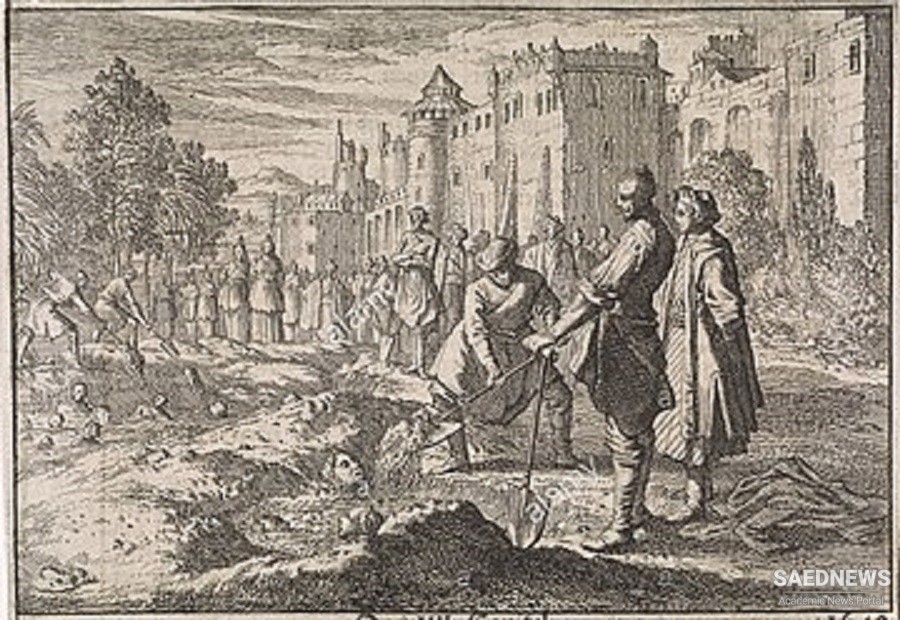Those who were still alive had been blinded and were thus unsuitable to rule. He had appointed his grandson Sam Mlrza, a son of the murdered Saf I Mlrza as his successor, although in a not entirely unambiguous fashion. The decision to have the prince come to Ashraf to prepare him to take over the throne came too late, and the negotiations about what was to happen after his death, which the shah conducted with various leading figures from his deathbed, achieved no results.
As it proved impossible to keep the shah's death a secret, and as the alternative possibility of unforeseeable developments such as the enthronement of another prince, local risings, or intervention by neighbouring powers, could not be ruled out, the leading figures in the empire who were present in Ashraf, especially the Grand Vizier Khalifa Sultan and the commander of the guards 'Isi Khan, made every effort to arrange for the succession of Sam Mlrza at the earliest possible moment. A document to this effect which was sent to Isfahan had the desired effect. Promptly on 28 January 1629, three weeks before the court entourage returned, he mounted the throne in accordance with the wishes of his grandfather, adopting the royal title Shah Safi.
Reports on this change of rulers expressly stress the part played by members of the Safavid order and the fact that the observances of the order were fulfilled.1 According to these reports, the leading aristocrats of the empire had assured themselves of the agreement of this group at the Ashraf meeting, and in Isfahan the rules of the sufls were observed at the enthronement. It may be legitimate to see in this regard a connection with the attitude of the dead shah, who repeatedly had attached the greatest importance to his position as pir and murshid, i.e. master of the order and its spiritual leader. On the other hand, it is of some interest to note (especially in view of the observances of the order we have referred to, but of which we obtain no very precise details in the source materials), that Mir Damad, equally famous as a philosopher and representative of "orthodox" Shl'I theology, took part in the solemn ceremonies at Isfahan.
The details we have about the character of the new ruler, who began his reign at the age of eighteen, seem at first sight to be contradictory. On the one hand he is praised for his lavish generosity, and on the other he is reproached with unbounded cruelty. Foreign observers who had personal contacts with him praise his charm and his uncomplicated character, which they contrast with the inscrutable and incalculable attitudes of his grandfather. Which of these estimates is correct? Was Shah SafI a warm and generous ruler or a bloody despot? It is certainly the case that, for instance, at his enthronement he distributed lavish presents. But when we learn that so enormous a sum as 500,000 tumans was spent for this purpose, and Imam Quli Khan, the grand beg of Fars, was remitted a whole year's instalment (60,000 tumans) of the dues he owed, it is more appropriate to speak of wild extravagance than of generosity.


 Potential Successors of Shah Abbas and Their Advocates
Potential Successors of Shah Abbas and Their Advocates














































